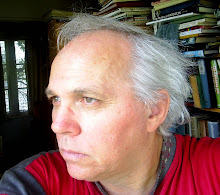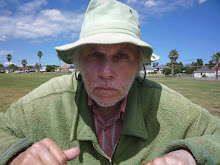Room 377

Here is an image of my sister Gillian Taylor with her grandchild. She has recently exhibited, at the Lopdell House in Titirangi Auckland; some processional and “environmental” or conceptual works - digitally manipulated photographs - after completing an art course at a Polytechnic at Whangarei.
{{See below for my discussion on conceptual (and environmetally based) and processional art in NZ and elsewhere... and intertextuality and palimsistic process of which this EYELIGHT projectful procedure is an example. Of which it is what it is all things that it is that it is or could perhaps be ... the world we are in... in... (the eyes ) }}}}}}}}}}}}}}}}}}}}}}}}}}}}}}}}}}}}}}}}}}}}}}}}}}}}}}}}}}}}}}}}}}}}
("He was reading Black Beauty on his death bed.")
EYELIGHT_ PROCESS_ THE INFINITE POEM_
“Inside Eyelight and Inside the Eye”
1)
the rhythmic organisation of space. Space no longer exists.
… Objects never end and intersect with infinite combinations of
sympathetic harmonies and clashing aversions
Where the armies of machining ants clash and Time is bent
into a ring on the old father’s finger
and form, producing a machine-like finish, suggests that
there is an absolute, ultimate form
- randomize the rat
This from my “from ‘The Infinite Poem’”
{{{{{{{{{{{{{{{{{{{{{{{{{{{{{{{ }}}}}}}}}}}}}}}}}}}}}}}}}}}}}}}}}}}}}}}}}}}}}
P - L - A - Y
First of all grammar meaning coherence and order are all quite deliberately buggered out of ordinary existence the whole “work” is a mass of quotes (some include whole passages and in principle for example there is no reason I might not consider whole books (or even whole libraries or all books written and or possible to have been written etc) a “fragment” could be, say, the collected works of Shakespeare or Milton could be a fragment (or fragmented); or say the telephone directories of Shanghai or Morrinsville for the last 60 years or more…) or fragments of fragments of them and with my own stuff mixed in etc etc taken in a semi or pseudo random fashion that gives some idea of the ‘sub strata’ of EYELIGHT. The Infinite Poem was the inception of EYELIGHT
_________________________________________________________________
However the phrase that’s is most significant here is:
and form, producing a machine-like finish, suggests that
there is an absolute, ultimate form
And I have written previously here and on this Blog-Project of how EYELIGHT is based on concepts arising from my ideational or conceptual work The Infinite Poem. I talked of the transformative nature of what I am doing or attempting to “do”; what I am (now) doing. The changing, or processional, nature of what I am doing, calls into question what is “now doing” – but we are limited by language. All writing, all creative or projectional work or texts or intertexts of any kind, has within itself its own origins; but I think that in the kind of ongoing work I am doing, which is undoubtedly non-unique, that process of great importance. It could be said that it is process.
Here are early images from a previous Blog entries – room 8 or so.
()()()()()()()()()()()()()()()()()()()()()()()()()()()()()()()()()()()()()()()()()()()()()()()()()()()()()()()()
Ideally 'read' them from the “bottom” – this shows the process of the fragmentation of a “drawing” or text I had done.
READ THE IMAGES.

















ROOMS 9 and to 10



e
and armies of machining ants

}}}}}}}}}}}}}}}}}}}}}}}}}}}}}}}}}}}}}}}}}}}}}}}}}}}}}}}}}}}}}}}}}}}}}}}}}}}}}}}}}}}}}}}}}}}}}}}}}
{{{{{{{{{{{{{{{{{{{{{{{{{{{{{{{{{{{{{{{{{{{{{{{{{{{{{{{{{{{{{{{{{{{{{{{{{{{{{{{{{{{{{{{{{{{{{{{{{
}}}}}}}}}}}}}}}}}}}}}}}}}}}}}}}}}}}}}}}}}}}}}}}}}}}}}}}}}}}}}}}}}}}}}}}}}}}}}}}}}}}}}}}}}}}}}}}}}
}}}}}}}}}}}}}}}}}}}}}}}}}}}}}}}}}}}}}}}}}}}}}}}}}}}}}}}}}}}}}}}}}}}}}}}}}}}}}}}}}}}}}}}}}}}}}}}}}
{{{{{{{{{{{{{{{{{{{{{{{{{{{{{{{{{{{{{{{{{{{{{{{{{{{{{{{{{{{{{{{{{{{{{{{{{{{{{{{{{{{{{{{{{{{{{{{{{
}}}}}}}}}}}}}}}}}}}}}}}}}}}}}}}}}}}}}}}}}}}}}}}}}}}}}}}}}}}}}}}}}}}}}}}}}}}}}}}}}}}}}}}}}}}}}}}}}
}}}}}}}}}}}}}}}}}}}}}}}}}}}}}}}}}}}}}}}}}}}}}}}}}}}}}}}}}}}}}}}}}}}}}}}}}}}}}}}}}}}}}}}}}}}}}}}}}

how, at this light of time
all this.... It began somehow, and I
where the serpent had parked the sedan beside the spreading sneer of the evening’s trees who were lush and unapproachable in the growing and licentious gloom whose possibilities mean so much, especially to the few
in the know. So I stand outside in derided non-decision, forever
a pastel perhaps: struggling to at least reach the status of a syllable, “.
and the Event Wave? Did they
mention the Event?
a body of light
ARE WE
THOSE
CHEMICAL GHOSTS ?
of infinity and that of information
both in philosophy and our “every day” are problema
is not known whether infInity ex
Cantor discovered the Aleph Nu of countable sets
informtn is dirctly proportional tth uncrtnty f th
information I received = log [ a posteriori probability
------------------------------

ROOM 8
Now here is the image of a man in Jacob Brownowksi’s book “The Ascent of Man” –
Room 5A from The Ascent of Man by Jacob Bronowski
"Knowledge or Certainty"
"...These pictures do not so much fix the face as explore it; that the artist...as if by touch; each line...strenghtens the picture but never makes it final. We accept that as the method of the artist...
...But what physics has done is to show that it is the only method to knowledge. There is no absolute knowledge. And those who claimit, whether they are scientists or dogmatists open the door to tragedy. All information is imperfect. We have to treat it with humility. That is the human condition; and that is what quantum physics says. I mean that literally.
"Knowledge or Certainty"
"...These pictures do not so much fix the face as explore it; that the artist...as if by touch; each line...strengthens the picture but never makes it final. We accept that as the method of the artist...
...But what physics has done is to show that it is the only method to knowledge. There is no absolute knowledge. And those who claim it, whether they are scientists or dogmatists open the door to tragedy. All information is imperfect. We have to treat it with humility. That is the human condition; and that is what quantum physics says. I mean that literally.
In the above picture it is shown not only is such a sketch only one aspect of an artist’s vision of a being or thing: but if we were to explore any phenomena – using whatever technology – x-rays, chemical analysis, electron microscopes, MRI, or any other measuring or assessing methods we find that the picture of “reality” is “flawed” –we cannot “see” reality – however that is defined. Nor can we “see” the mind or soul or person of the man depicted. This is problem in art, in science in all human endeavour.
Here philosophy, art, literature, science mathematics and all other disciplines converge to give only an approximation. But of Brancusi’s famous stainless steel sculptures (very beautiful, wonderfully like a marvelous bird), it was said (that it “suggests”) there is:
an absolute, ultimate form
And that is one interpretation of his objects. That there is such perfect and uncorruptable and transcendent form is thus at least questionable. EYELLIGHT asks that question, even getting “angry” with matter:
What was the matter with the matter?
Is embedded in:
and indeed as I know you are thinking, there are certain uncertainties whose monstrous beauty is almost nearly tiresome:
Why couldn’t the matter: the deep stuff in the dark spring of things: why couldn’t it get in control? Why wern’t we informed immediately?
There has to be an inquiry of course. What was the matter with the matter? Could I tell you? That it kept throwing molds, kept re-shaping – kept touching the clay and rebreeding life and so on:but nothing is ever perfect as you’ve probably noticed. Matter and fire for example are surely forever at war.
The special thing that burns in the eye: they are in conflict. Eternal. The usual thing: Dog has set up a conflict, a complex: a complex conflict like a five volume analysis of Finnegans Wake.
The Joycean, the Miltonic thing: which ever turns you on or out.
nothing is connected – somehow.
This apparent impossibility (this uncertainty, this perpetual doubt) of total or perfect knowledge doesn’t imply that I am opposed to science or technology etc or that I think we cannot one day have great knowledge of systems, that there is no useful knowledge or even that there are no extra–material existence etc I say only of that absolute certainty that I cannot be certain of it myself! Science I support and the potential advantages of science properly applied and wisely used are enormous to human beings and all other creatures. What Bronowski speaks against in these chapters of his book is not the arrogance of science but the dangers of absolutist thinking in all human endeavours – including science – the arrogance and arrogation of science and technology.
I have (a more extensive) note on this later.
But to return to the implications of my Infinite Poem fragment – Brancusi’s work itself doesn’t claim anything, nor does The Infinite Poem.
It doesn’t privilege (or decry) either decay, or process, error, or ‘perfection’, probability density clouds to position electrons, as ideals or ideas that (say Brancusi himself, or the Infinite Poem, or anyone or anything else may have) … the point is that EYELIGHT, like life itself, like all phenomena on Earth or in any sentient or other being or thing, is in constant change:
All things are a-flowing,
As sage Heraclitus said
As Ezra Pound wrote.
Pound struggled towards this process in his Cantos and such writers as Olson (perhaps Williams), Ronald Johnson, and Stein took process or procedure as a major themes. But it is prefigured in the writing of many s throughout human history even Sappho.
It is seen also in the work of Alan Sondheim and many others…
I will continue with this theme of transformative enactment and palimpsests, or “nature” as in Bueys or such conceptual or surreal artists as Cornell Haake, Boltanski, Charles Ives, the Concrete Poets, Higgins; NZ artists (to name only a few) Christine Hellyar, Simon Shepheard, Carole Shepheard, Anton Parsons, Denise Kum; Stan Brakhage (US), and Len Lye of NZ, indeed my own sister - Gillian Taylor has recently exhibited at Lopdell House in Titirangi showing the strangeness and magic of the human ability to perceive this transformation even of “junk”and indeed the illusory nature of reality as perceived is seen in works that seem (at first look) to be paintings are changed photographs of detritus – and I suppose I want to deal with what Barthes calls “intertextuality”and so on – in my next posts on here…
{{{{{{{{{{{{{{{{{{{{{{{{{{{{{{{{{{{{{{{{{{{{{{{{{{{{{{{{{{{{{{{{{{{{{{{{{{{{{{{{{{{{{{{{{{{{{{{{
.jpg)



No comments:
Post a Comment